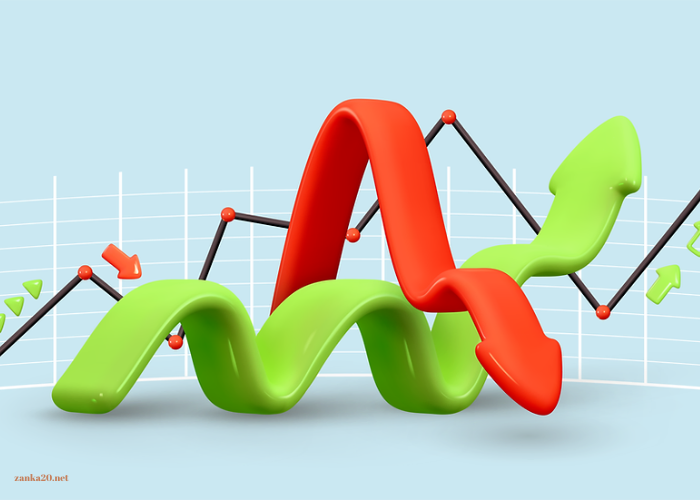Economic forecasting is a pivotal discipline in understanding and predicting financial trends that shape global economies. By analyzing historical data, current economic indicators, and applying advanced statistical techniques, economists and financial analysts provide invaluable insights that guide policymakers, investors, and businesses in making informed decisions. This article delves into the essence of economic forecasting, exploring its methodologies, significance, and the impact of emerging trends in the financial world.
Understanding Economic Forecasting
Economic forecasting involves predicting future economic conditions based on historical data and current trends. It encompasses a wide range of analyses, including GDP growth, inflation rates, unemployment figures, and market behaviors. These forecasts help in assessing potential economic scenarios, influencing strategic decisions, and mitigating risks associated with economic uncertainties.
Key Methodologies in Economic Forecasting
-
Quantitative Models
Quantitative models are foundational to economic forecasting, relying on mathematical and statistical techniques to predict future trends. Among the most commonly used models are:
- Time Series Analysis: This method involves analyzing historical data points to identify patterns and trends over time. Techniques such as ARIMA (AutoRegressive Integrated Moving Average) and exponential smoothing are frequently employed to forecast future values based on past observations.
- Econometric Models: These models use statistical methods to test economic theories and relationships. By incorporating various economic variables, econometric models can provide insights into how changes in one variable might affect others. The Vector Autoregression (VAR) model and the Structural Equation Model (SEM) are examples of econometric approaches used in forecasting.
- Structural Models: Structural models focus on the underlying economic relationships and causal mechanisms. These models often incorporate economic theories and policy implications, providing a comprehensive view of how different factors interact within an economy.
-
Qualitative Models
Qualitative forecasting methods are used when historical data is sparse or unreliable. These approaches rely on expert judgment, market surveys, and subjective assessments. Common qualitative methods include:
- Delphi Method: This involves gathering insights from a panel of experts through multiple rounds of questioning. The experts’ opinions are synthesized to form a consensus forecast, which can be useful in scenarios where data is limited or uncertain.
- Scenario Analysis: Scenario analysis explores different possible future scenarios based on varying assumptions. This method helps in understanding the range of potential outcomes and assessing the impact of different variables on economic conditions.
- Market Research: Surveys and focus groups can provide valuable insights into consumer behavior, business sentiment, and market trends. This qualitative data complements quantitative models, offering a more holistic view of economic dynamics.
Significance of Economic Forecasting
Economic forecasting plays a critical role in various sectors, including:
- Policy MakingPolicymakers rely on economic forecasts to design and implement effective economic policies. Accurate forecasts help in anticipating the impact of policy changes on economic growth, inflation, and employment. For instance, central banks use forecasting models to set interest rates and manage monetary policy, aiming to stabilize inflation and promote economic growth.
- Investment DecisionsInvestors use economic forecasts to guide their investment strategies. By analyzing forecasts related to economic growth, interest rates, and market trends, investors can make informed decisions about asset allocation, risk management, and portfolio diversification.
- Business PlanningBusinesses use economic forecasts to develop strategic plans, manage risks, and identify opportunities. Forecasts related to consumer demand, production costs, and market conditions help businesses in budgeting, pricing strategies, and supply chain management.
- Financial MarketsFinancial markets are highly sensitive to economic forecasts. Accurate predictions of economic indicators can influence stock prices, bond yields, and currency exchange rates. Market participants use forecasts to gauge market sentiment and adjust their trading strategies accordingly.
Challenges in Economic Forecasting
Despite its significance, economic forecasting faces several challenges:
- Data LimitationsForecasting models rely on accurate and timely data. However, data limitations, such as incomplete historical records or unreliable statistics, can impact the accuracy of forecasts. Ensuring data quality and addressing gaps in historical data are critical for improving forecasting precision.
- Model UncertaintyEconomic models are based on assumptions and simplifications, which may not always reflect real-world complexities. Model uncertainty can arise from inaccurate assumptions, oversimplification of economic relationships, or changes in economic conditions that were not anticipated.
- External ShocksUnexpected events, such as natural disasters, geopolitical conflicts, or financial crises, can significantly impact economic conditions. Forecasting models may struggle to account for these external shocks, leading to deviations from predicted outcomes.
- Changing Economic DynamicsThe global economy is constantly evolving, with new trends and dynamics emerging regularly. Adapting forecasting models to account for changing economic structures, technological advancements, and shifts in consumer behavior is essential for maintaining forecasting accuracy.
Emerging Trends in Economic Forecasting
- Big Data and Machine LearningThe advent of big data and machine learning has revolutionized economic forecasting. Advanced algorithms can analyze vast amounts of data, identify patterns, and make predictions with greater precision. Machine learning models, such as neural networks and ensemble methods, are increasingly used to enhance forecasting accuracy.
- Globalization and InterconnectednessGlobalization has led to increased economic interconnectedness, making it crucial for forecasting models to consider international factors. Understanding how global economic trends, trade policies, and geopolitical developments impact national economies is essential for accurate forecasting.
- Real-Time Data AnalysisThe availability of real-time data through digital platforms and sensors allows for more timely and responsive forecasting. Real-time data analysis helps in detecting emerging trends and adjusting forecasts in response to current economic conditions.
- Behavioral EconomicsIncorporating insights from behavioral economics into forecasting models helps in understanding how psychological factors and human behavior influence economic decisions. Behavioral insights can enhance the accuracy of forecasts related to consumer spending, investment patterns, and market sentiment.
Conclusion
Economic forecasting is a dynamic and evolving field that provides crucial insights into financial trends and economic conditions. By employing a combination of quantitative and qualitative methodologies, economists and analysts can offer valuable predictions that guide decision-making across various sectors. While challenges remain, advancements in data analysis and modeling techniques continue to improve forecasting accuracy. As the global economy evolves, staying abreast of emerging trends and adapting forecasting approaches will be essential for navigating the complexities of the financial world.





Leave a Reply